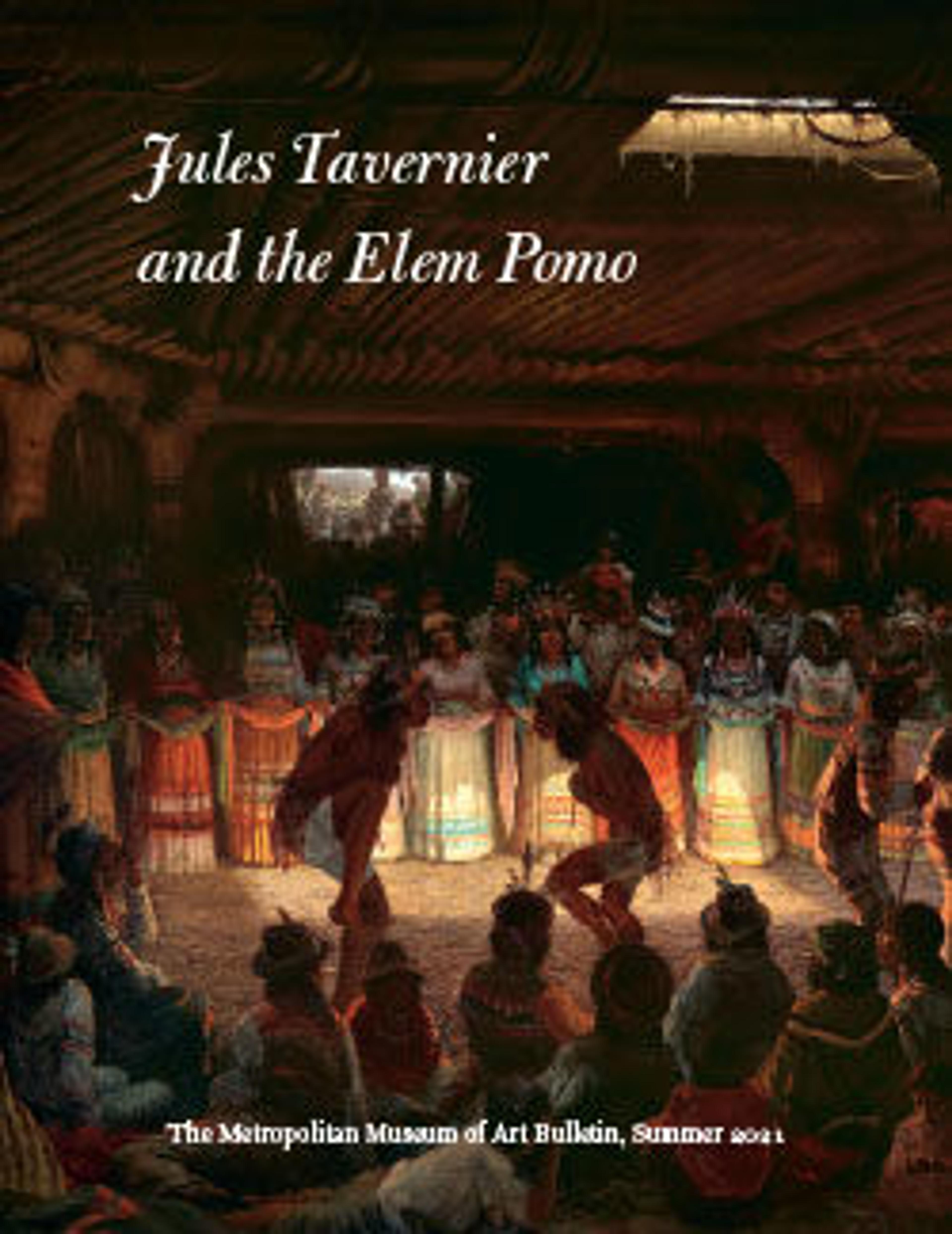Dance in a Subterranean Roundhouse at Clear Lake, California
In the 1870s, French-born and -trained artist Jules Tavernier settled in San Francisco, where he received his most important commission from Tiburcio Parrott, the city’s leading banker. During an 1876 visit from his Parisian business partner Baron Edmond de Rothschild and the baron’s traveling companion Count Gabriel Louis de Turenne, Parrott was able to obtain entry to a ceremonial dance of the Elem Pomo known as the mfom Xe (people dance) in an underground Xe-xwan (roundhouse) at Clear Lake, California.
Tavernier spent two years working on this tour de force, a composition with nearly one hundred figures, including Elem Pomo dancers and musicians as well as non-Native onlookers, notably Parrott, Rothschild, and Turenne. He rendered the dimly lit interior—its circular shape symbolic of the life-sustaining form of a basket—with brilliant technical finesse. While the painting suggests the rich vitality of Elem Pomo culture, it also exposes the threat posed by White settlers, including Parrott, who was then operating a toxic mercury mine on the Elem Pomo’s ancestral homelands. Designated a Superfund site by the Environmental Protection Agency in 1990, the mine continues to pollute the land and water of the present-day Elem Indian Colony, where the community resiliently sustains their cultural practices and ceremonies, including the mfom Xe and the Xe-xwan.
Tavernier spent two years working on this tour de force, a composition with nearly one hundred figures, including Elem Pomo dancers and musicians as well as non-Native onlookers, notably Parrott, Rothschild, and Turenne. He rendered the dimly lit interior—its circular shape symbolic of the life-sustaining form of a basket—with brilliant technical finesse. While the painting suggests the rich vitality of Elem Pomo culture, it also exposes the threat posed by White settlers, including Parrott, who was then operating a toxic mercury mine on the Elem Pomo’s ancestral homelands. Designated a Superfund site by the Environmental Protection Agency in 1990, the mine continues to pollute the land and water of the present-day Elem Indian Colony, where the community resiliently sustains their cultural practices and ceremonies, including the mfom Xe and the Xe-xwan.
Artwork Details
- Title:Dance in a Subterranean Roundhouse at Clear Lake, California
- Artist:Jules Tavernier (American (born France), Paris 1844–1889 Honolulu, Hawaii)
- Date:1878
- Geography:Made in San Francisco, California, United States
- Culture:American
- Medium:Oil on canvas
- Dimensions:48 × 72 1/4 in. (121.9 × 183.5 cm)
- Credit Line:Marguerite and Frank A. Cosgrove Jr. Fund, 2016
- Object Number:2016.135
- Curatorial Department: The American Wing
More Artwork
Research Resources
The Met provides unparalleled resources for research and welcomes an international community of students and scholars. The Met's Open Access API is where creators and researchers can connect to the The Met collection. Open Access data and public domain images are available for unrestricted commercial and noncommercial use without permission or fee.
To request images under copyright and other restrictions, please use this Image Request form.
Feedback
We continue to research and examine historical and cultural context for objects in The Met collection. If you have comments or questions about this object record, please contact us using the form below. The Museum looks forward to receiving your comments.
